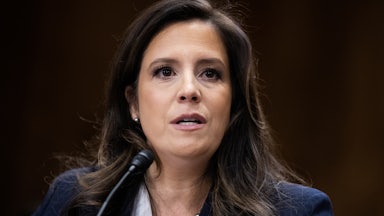Since reentering the Oval Office last month, President Donald Trump has undertaken several actions to restrict access to public health and education research. The ostensible goals may be to remove certain content related to issues that the administration considers ideologically objectionable—such as references to racial, sexual, and gender identity and information regarding climate change—as well as a nod to cost-cutting. But the end result of this knowledge purge may be the loss of critical data that physicians, researchers, and educators use to inform their work on matters as wide ranging as public health, schooling, and the national economy.
In January, agencies scrambled to scrub websites that made references to transgender individuals or “diversity, equity, and inclusion” efforts, with the goal of being in alignment with Trump’s executive orders. The Office of Personnel Management ordered agency heads to remove “gender ideology” from websites; this resulted in actions such as the Centers for Disease Control and Prevention removing information on contraception, facts about HIV-positive and transgender individuals, and research showing that transgender youth face higher rates of bullying, depression, and other issues. Data from the CDC’s Youth Risk Behavior Surveillance System, which tracks health issues for young people, was removed entirely.
A judge later ordered the CDC, the Department of Health and Human Services, and the Food and Drug Administration to restore the web pages that had been removed, citing doctors’ declarations filed in the case, led by Public Citizen and physicians in the organization Doctors for America. District Judge John Bates wrote that if these doctors “cannot provide these individuals the care they need (and deserve) within the scheduled and often limited time frame, there is a chance that some individuals will not receive treatment, including for severe, life-threatening conditions.”
Zach Shelley, an attorney for the Public Citizen Litigation Group and lead counsel on the case to restore those health agencies’ web pages, said that most of the web pages are back up and that “we’re still working with our clients to identify additional websites” on which they may rely.
“That doctors and public health officials and researchers have access to those pages right now means that … patients are being treated correctly and scientific progress is moving forward,” said Shelley. Losing that access permanently would be “incredibly costly,” Shelley continued, in part because much of that information relates to monitoring and responding to outbreaks of disease.
“When you deny public health officials access to that information, it means you’re increasing the risk of disease outbreaks. You’re slowing responses to them,” Shelley said. “That means more people sick, more people suffering, more people dying.”
The removal of data reflects Trump’s larger goal of strong-arming the government to be in alignment with his values, an objective also reflected by his administration’s legally challenged efforts to gut certain departments, such as the U.S. Agency for International Development and the Consumer Financial Protection Bureau, as well as measures taken to cut thousands of people from the federal workforce. This includes the mass firing of more than one thousand employees from the CDC this week; even with CDC web pages back up, there will be fewer people to conduct the crucial research needed to keep them current.
Indeed, the shrinking of the federal workforce could have significant effects on the future of data access more broadly, said Amy O’Hara, executive director of the Federal Statistical Research Data Center at the McCourt School for Public Policy. These range from the potential loss of experts collating information in an apolitical manner to no longer having the resources to conduct research thoroughly, to demand for information decreasing because of the reduction in numbers of government employees.
“Right now, there are reliable data sources coming out because of the transparency and rigor of the practices for the people producing it,” said O’Hara, who is also president of the Association of Public Data Users. These “checks and balances” ensure that, for example, economic indicators are not leaked early, or there is transparency in how the consumer price index is calculated.
“Politicization could occur if there weren’t those employees holding the line, or there was a reduction in staff, and you just don’t have enough personnel to do the normal [quality control] on a data release,” O’Hara continued.
There is also a risk of information becoming outdated. Even if researchers and educators download older reports now—a plan that’s currently being undertaken by individuals and organizations such as the Data Rescue Project—that data could lose its relevance, and future reports may not have that same integrity.
“Those data are in demand by people who need them for the programs that they run, or grant applications, or for research projects that are going to result in people getting their degrees,” said O’Hara. “It’s the pipeline of people that build knowledge in the country, and they need access to timely, accurate data and data that have not been manipulated in any way.”
Scientists who receive grants from the National Science Foundation are scanning their research projects for activities that do not comply with executive orders, based on terms flagged by the Trump administration, such as “women,” “institutional,” “historically,” and “barriers.” The administration also moved to slash funding for the National Institutes of Health, a move that received criticism from some red-state institutions and Republican lawmakers and was put on hold by a federal judge.
The Trump administration has also targeted the Education Department, with the functional dismantling of the Institute of Education Sciences, an independent research organization within the agency. This week, Trump said he would like the Education Department to be “closed immediately,” calling it a “con job.” (In her Senate confirmation hearing this week, Trump’s nominee for education secretary, Linda McMahon, said that “it is not the president’s goal to defund the programs, only to have it operate more efficiently.”)
Under the aegis of the Elon Musk–led Department of Government Efficiency, the administration has cut $900 million in contracts, including for research that tracks students’ long-term education progress and strategies for teaching elementary-level reading—mere weeks after the National Assessment of Educational Progress found that American children’s reading levels are at a nadir. The actions also may affect access to the “What Works Clearinghouse,” which provides schools with guidance on effective teaching practices. (The cuts to the IES will not affect the NAEP or the College Scorecard.)
“Before the institute, educational research was fragmented, ideologically driven and inaccessible to parents and teachers. Findings were buried in books or locked behind paywalls. The institute broke that cycle,” argued University of Notre Dame psychology professor Nicole M. McNeil and Columbia University psychology professor Robert Stuart Siegler in an article in The Conversation.
Musk and his allies have also gained access to the Labor Department, a move that worries former members of the Bureau of Labor Statistics about that agency’s constantly updated collection of critical information about the American workforce, relied upon by government agencies and businesses alike to set policy and long-term agendas. “If they access data, it would be very problematic,” William Beach, who served as commissioner of the BLS during Trump’s first term, told Politico this week. DOGE obtained access to transfer data out of the Labor Department’s systems; separately, a judge blocked the agency from accessing sensitive information in the Treasury Department.
Beyond lawsuits, it’s unclear how the reshaping of data collection by the executive can be halted. Democratic lawmakers have raised the alarm over the loss of research and the access provided to DOGE, but they are in the minority in Congress and have little sway. Some Republicans have expressed concerns over cuts to NIH. Nonetheless, the vast majority of GOP senators voted to approve Trump’s nominee for HHS secretary, Robert F. Kennedy Jr.; Senator Susan Collins told reporters that Kennedy had pledged to “reexamine” the cuts.
Ultimately, data is a “public good,” said O’Hara, and losing access would have far-reaching effects. A weather app would not be as reliable without data from the National Oceanic and Atmospheric Administration, and private-sector companies could not obtain critical information on demographics without data collection from the federal government.
“We have these expectations for data coming out in the future. We just assume it’s going to be there, and it’s now in jeopardy,” O’Hara said.










